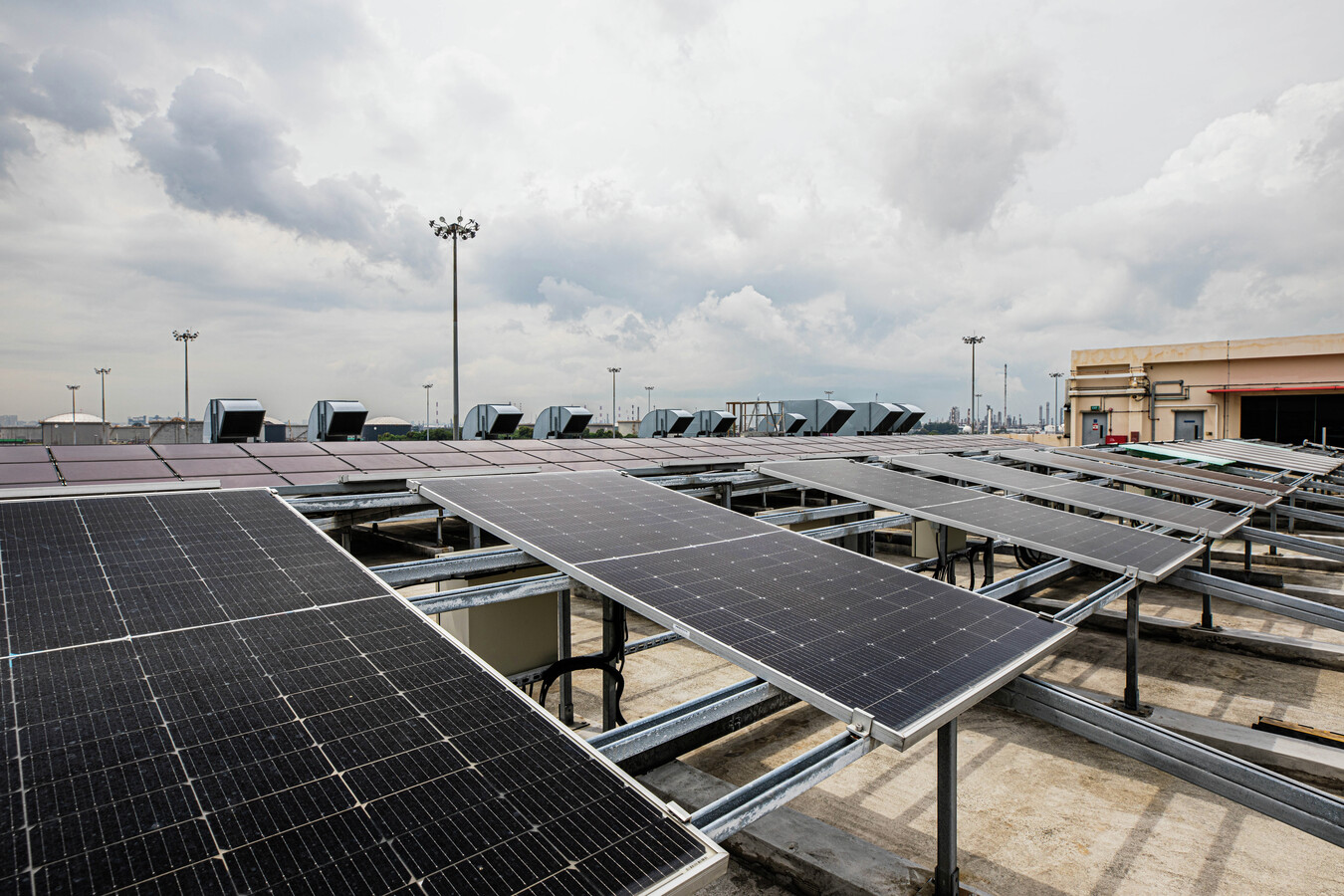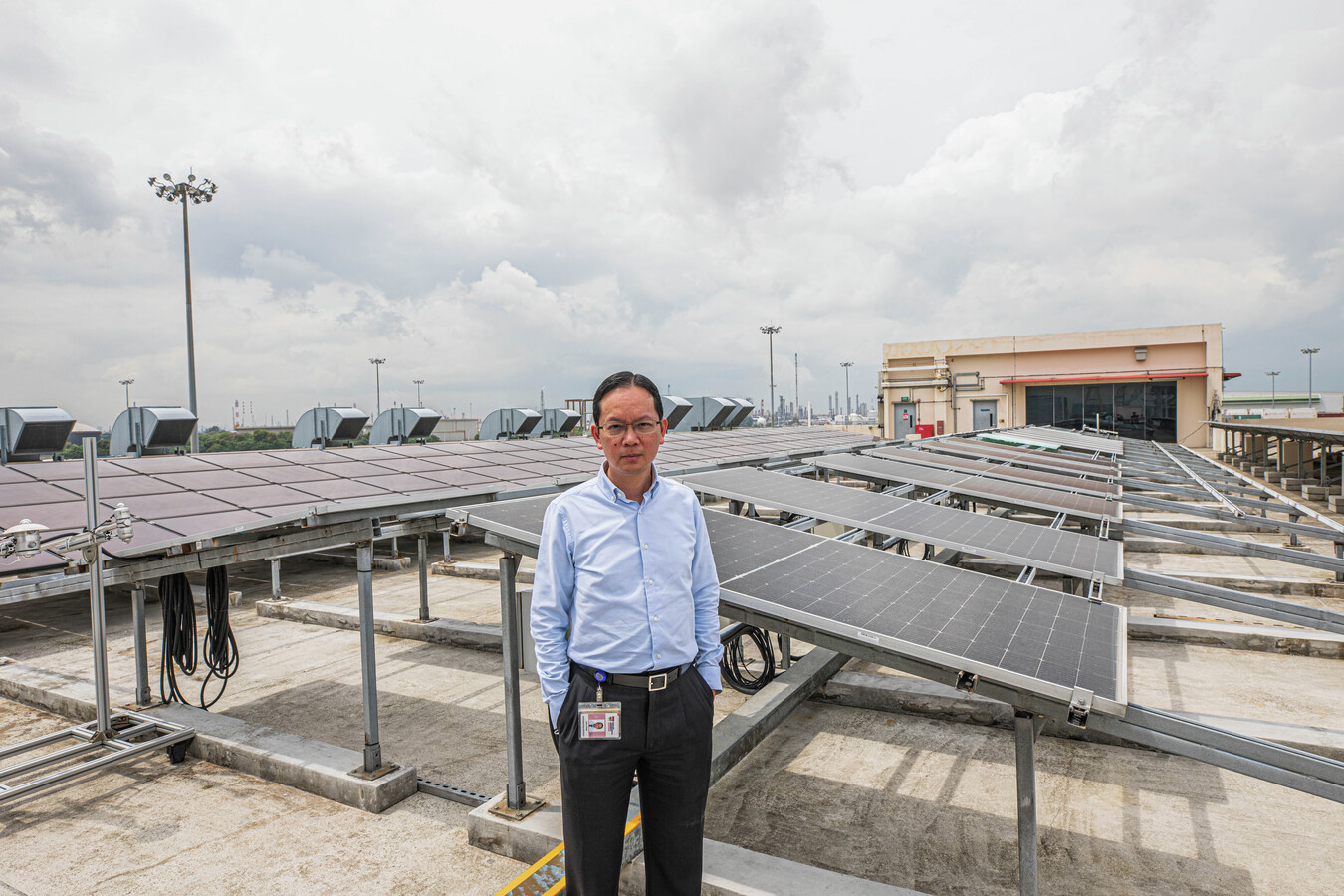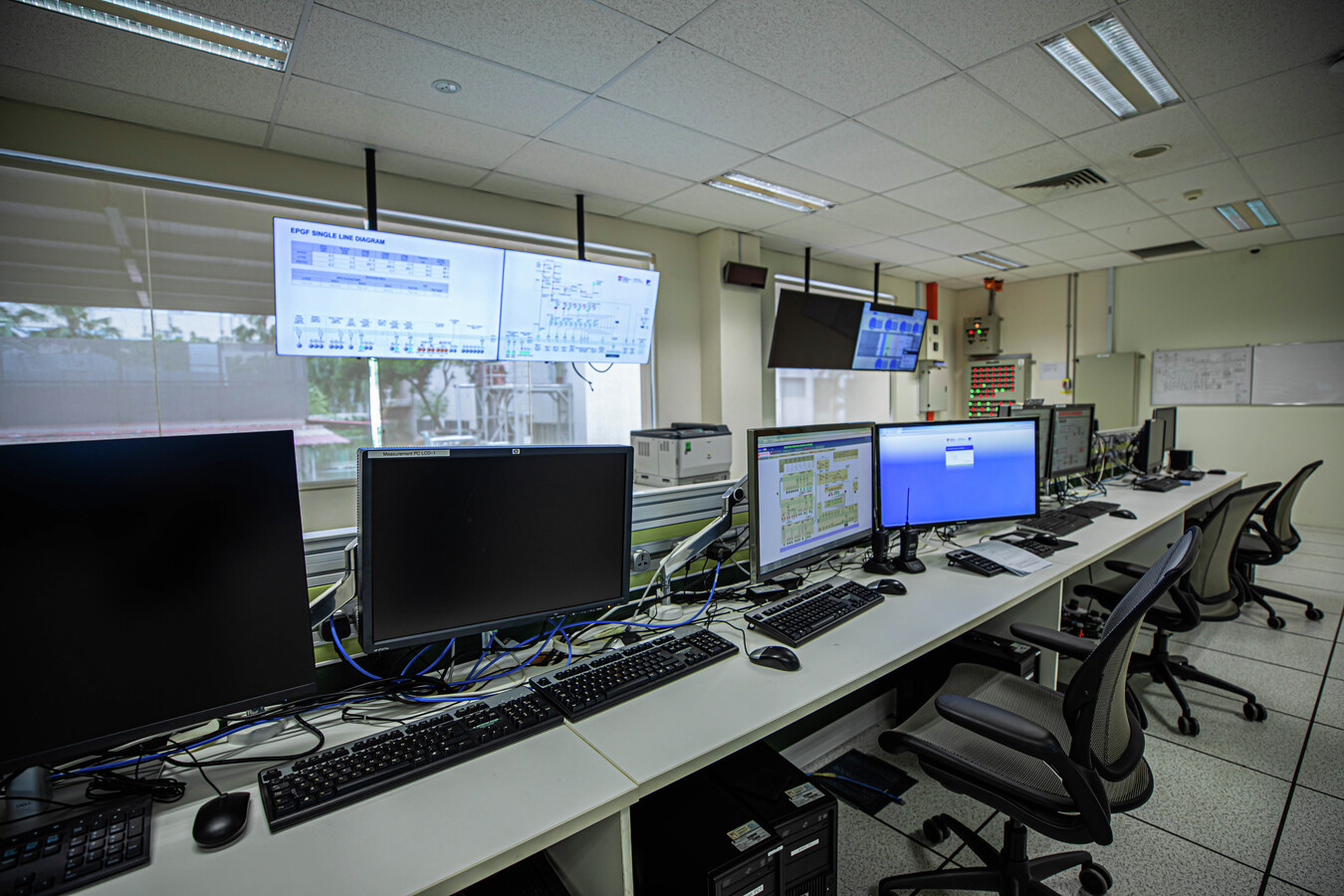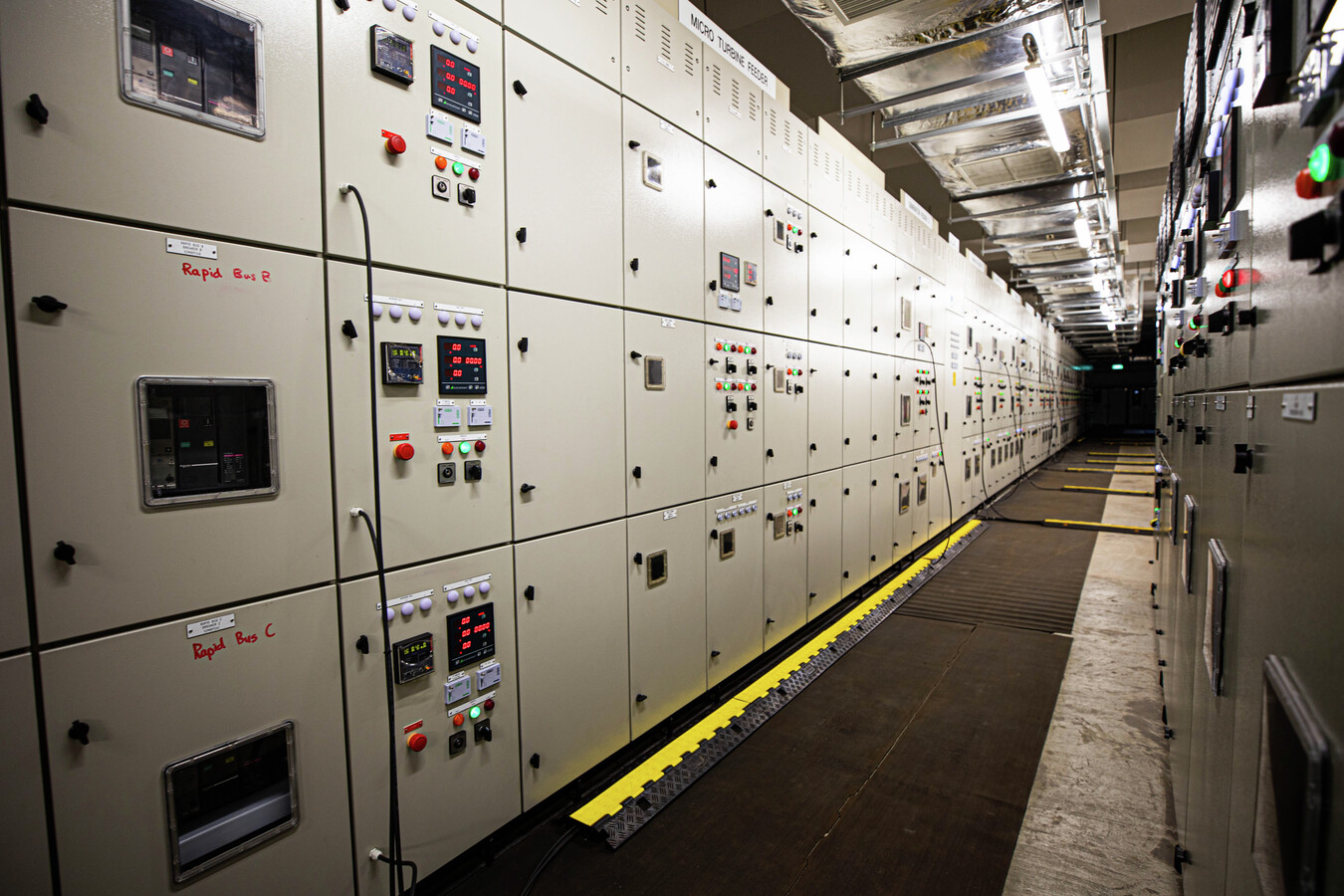“Singapore is in the midst of an energy transition,” notes Mr Alex Chong, Programme Director of Electrification and Power Grid Centre (EPGC). He is speaking from Singapore’s only research and development (R&D) facility that supports testing of bidirectional power flow with the national electricity grid operated by SP Group.
“As part of the government’s push to increase the component of renewable energy in our energy mix, we’re steadily shifting from conventional fossil fuel-based power plants to Distributed Energy Resources (DERs). For instance, we now have thousands of solar photovoltaic (PV) panels installed on building rooftops, all generating electricity that is directly exported to the national grid.”

Electrification will play a pivotal role in this energy paradigm shift. Over the years, we have witnessed a proliferation of solar PV panels, electric vehicles (EVs) and energy storage systems (ESS). But before they can be commercialised, they must be tested rigorously to ensure that they can meet performance and safety requirements.
For many manufacturers and distributors of these solutions, they turn to the EPGC to bridge that last mile between product development and market rollout. Located on Jurong Island, EPGC is also the only facility here that is capable of handling megawatt-(MW) level power testing as well as grid-islanding and reconnection tests.
“We carry out what is similar to a factory acceptance test on behalf of our clients. Testing is an imperative step because while products are designed with certain specifications, whether they actually do so while operating under extreme conditions is another question. So, in a very controlled manner, we put the products right on the edge-of-the-envelope scenarios — scenarios that would otherwise be very dangerous if they were to occur in real life — to test their functionality, performance and reliability,” explains Mr Chong.
Putting electrical solutions to the test
An example of the test subjects is the inverters in the solar PV panels, which are designed to handle sudden fluctuations in grid voltage. Buoyed by PV emulators, the centre is able to replicate the behaviours of PV modules under almost any operational scenario and assess the PV inverters’ responses when facing faults triggered by adverse conditions.
Not every product that comes through the doors of EPGC will pass the tests. For solution providers, it may be disheartening to have to return to the drawing board when their products fail, but Mr Chong sees it otherwise. “We have worked with companies to test ESS for grid-scale, off-grid and even marine applications. These batteries are huge. Once deployed, it’s very difficult and costly to have to perform troubleshooting. So, if there’s anywhere you want your product to fail, it’s right here in the research facility. The problems can be fixed, and the products can be tested and retested until they fulfil the requirements.”

Certification of EV Chargers Now Available on Jurong Island
One of the newer setups within EPGC is a dedicated test cell to support the certification of EV chargers according to Singapore’s TR25 standard. EVs are becoming ubiquitous in Singapore, and many carparks in Housing & Development Board (HDB) and business estates now support EV charging. However, as it is, many of the EV chargers in Singapore are not certified locally. The centre aims to plug this gap in testing capability and has successfully been accredited. Companies can now certify their chargers on Jurong Island.
With the test cell, EPGC is now more equipped to support the country’s rollout of EV charging infrastructures. One woe to overcome is the length of time required to charge heavy-duty EVs. “Due to tight schedules and unique operational needs, operators of electric buses and trucks do not have the luxury of waiting an entire day for their vehicles to charge. Hence, the industry sees a need for the development of fast EV chargers. At the new test cell, EPGC will explore with solution providers to test and bring their prototypes to life,” says Mr Chong.

Jurong Island’s Capability to Accommodate All Kinds of Testing
In 2013, EPGC was approached by local engineering firm WEnergy Global to collaborate on a microgrid that would harness solar energy and electrify the remote seaside village of Sabang, Palawan, the Philippines. Between conceptualisation and configuration, it would take about seven years for the Subang microgrid to become fully operational. Today, the Subang microgrid delivers electricity across a 14-km distribution network, catering to the needs of 700 residential consumers and commercial establishments.
The ability for WEnergy to analyse and refine its microgrid components and system design through simulations and emulations at EPGC’s MW-scale experimental grid on Jurong Island contributed to the project’s success.

“Furthermore, being situated on Jurong Island gives us the advantage to accommodate the testing of DERs that rely on fuels such as diesel, biodiesel, hydrogen, and compressed natural gas (CNG). Some of these systems cannot be readily tested on mainland Singapore due to safety requirements,” says Mr Chong. Battery manufacturing still an uphill task.
New Trends in Power Operation
More than just a facility that provides testing and certification services for its clients, EPGC also partakes in numerous ongoing research projects. The Energy Research Institute (of which EPGC is part of) is knee-deep in the development of a solid-state transformer (SST), which Mr Chong says will play a role in shaping Singapore’s very own Smart Grid 2.0 future. Made of high-powered semiconductor components, the SST is comparatively compact and space-saving and can handle power conversion more efficiently.
Another interesting development on the horizon? The rise of the vehicle-to-grid (V2G) technology, which is currently being trialled in different countries. There may come a point where EVs can operate as “batteries on wheels”, as Mr Chong puts it. No longer just consuming electricity, EVs now act as ESS. EV owners will get to contribute power back to the national grid, right at the carparks of their HDB estates or offices. After all, when it comes to Singapore’s electrification journey, “each of these technologies contribute like different pieces of the same puzzle,” Mr Chong adds.
Learn more about the companies that recently opened on JI.


